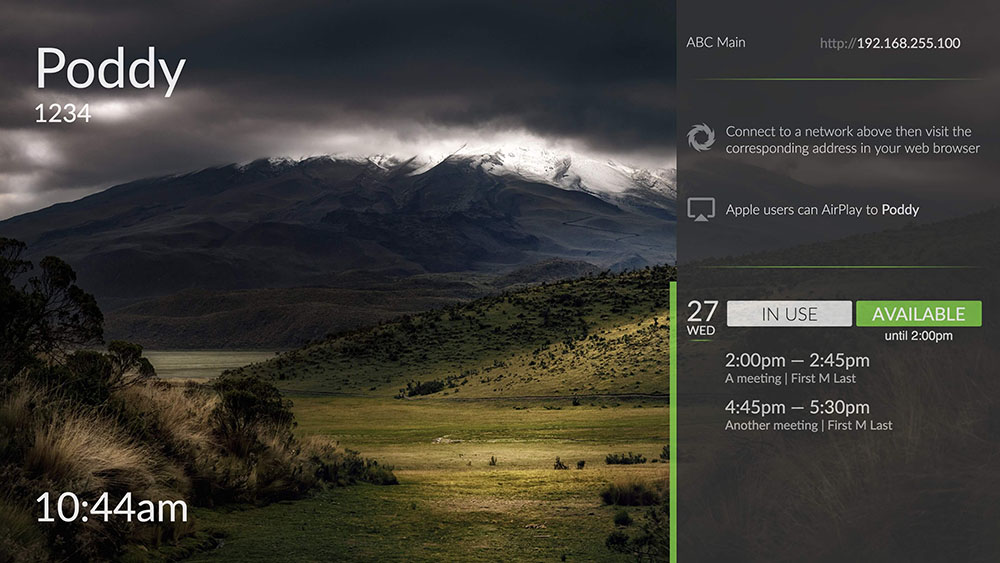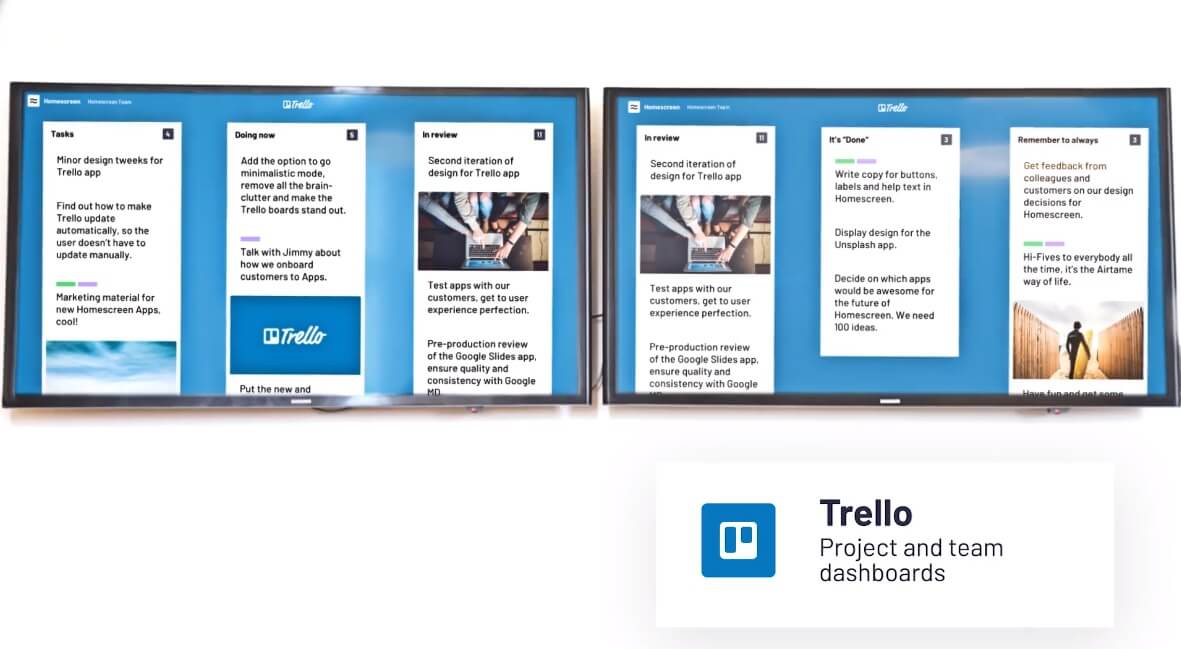
Despite the intuitive nature of wireless collaboration, wireless presentation systems and workflows don’t operate in a vacuum. Ensuring a seamless, productive meeting requires wireless presentation to be integrated with larger workflows, like room calendaring and corporate communications. This maximizes the usability, productivity, and return on investment (ROI) of the wireless presentation system, the room it inhabits (as well as the other AV equipment present), and people using it.
Room Calendaring. The availability of the meeting room or huddle space in which the group presentation or collaboration will take place is essential to ensuring a productive session occurs. If it’s a scheduled meeting, then the wireless presentation system should integrate with the room calendaring system (eg, Outlook) so that it can display the meeting time and owner on its home screen to ward off potential room squatters. That way, your meeting starts on-time, and there is no need to pull up the calendar on your laptop or phone to prove that the meeting room accepted your invitation. If your meeting shows up on the system’s home screen room calendar, you win! If the group session is ad hoc, then (1) note that you are the aforementioned room squatter and (2) you will need to verify that the room is not already booked by someone else via the home screen. Yes, integrated wireless presentation systems help you safely room squat.

Corporate Communications / Digital Signage. While wireless presentation systems have certainly increased the usage of displays, there are still plenty of times when they are not in use (eg, the room itself is not in use or people are waiting for others to enter the room) and the system home screen is being shown. If the home screen is just showing a stock picture or the system vendor’s logo, then the company is missing an opportunity to communicate to its employees. Look for a wireless presentation system that point to RSS feeds or HTML5 URLs so that your company can communicate any information it feels would be beneficial to someone waiting for a meeting to start or passing by the display.

Open Application Programming Interface (API). Wireless presentation systems are sometimes part of rooms with several pieces of AV equipment that require a more complex workflow. Systems with open APIs allow for integration into these workflows so that setup and shutdown are much more streamlined. Perhaps the most obvious example is a wireless presentation system that allows for integration with a room control system so that it can turn-on/off or wake-up/sleep along with all the other systems controlled in the room. This integration not only saves time but also ensures that the room is setup properly for an optimal user experience. Open APIs allow customers to integrate the wireless presentation system into several workflows specific to the company providing optimum flexibility and value-add.
As you can see, the ability for a wireless presentation system to integrate with third-party applications and devices is oftentimes an unnoticed driver of adoption and ROI. As these systems become increasingly software-based, expect more integration options and monitoring capabilities to come. We certainly are excited about the ones on our roadmap, some of which you saw at InfoComm and are seeing by virtue of participating in our beta program.
Obviously, wireless presentation systems that satisfy the requirements posed in this blog series provide higher ROI than ones that meet some or just a few of them. Our next and final blog post talks about the least obvious but perhaps most fundamental drivers of ROI: performance and reliability. These elements are ROI acid tests that are absolute must-haves as part of any evaluation of wireless presentation systems as they get behind the product spec sheet to the true capabilities of the system. We have talked a little bit about these earlier in the series but will dive deeper in this next and final post. Come back next week to learn more!
